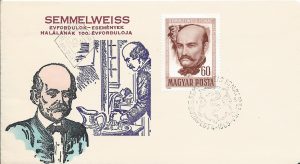This week’s ‘In our time’ programme discussed penicillin and mentioned the role of Norman Heatley and his crucial role in the story.
http://www.bbc.co.uk/programmes/b07dnnkm
Martyn Thomas
This week’s ‘In our time’ programme discussed penicillin and mentioned the role of Norman Heatley and his crucial role in the story.
http://www.bbc.co.uk/programmes/b07dnnkm
Martyn Thomas

Future 20th century medical historians will lament that there is very little surviving United Kingdom archival material relating to the development of premature baby units and general paediatrics from the end of the Second World War to the mid 1960’s.
‘The Gosset Collection’ is an online repository of the life and work of Dr Isaac ‘Harry’ Gosset, consultant paediatrician Northampton General Hospital, illustrating exemplary general paediatric and premature baby care (1947-1965). Within it, you can take the healthcare journey of the newborn child or paediatric case of that time.
Established as part of a commemoration of the 50th anniversary of Dr Gosset’s untimely death, the ‘Gosset Collection’ has complete premature baby and general paediatric care protocols, together with original film taken by Dr Gosset of the Premature Baby Unit as well as the General Paediatric Ward.
There is also a section on the development of the ‘Gosset icterometer, which Dr Gosset invented, developed and introduced into perinatal practice from the 1950’s and in use until the 1970’s. Made of Perspex the icterometer could rapidly and accurately identify neonatal jaundice, saving unnecessary blood tests and focusing attention on the sicker jaundiced newborn. The ‘Gosset Collection’ also contains the 1960 Lancet paper of a successful trial of the icterometer (through permission of Elsevier) an important landmark in neonatal medicine.
Lastly, there is a short vodcast placing Dr Gosset’s pioneering work in premature baby care within the context of the early development of this sub speciality.
submitted by Dr Andrew Williams

Mr Peter Homan (past president of the BSHM) invites readers to identify the object shown above. What is it ? What was it used for? How was it used?

Stamp covers with their artwork can reflect events in the history of medicine. This Hungarian stamp cover was issued in 1965 to mark the 100th anniversary of the death of Ignaz Semmelweis (1818-1865) who discovered the association between childbed (puerperal) fever and mortality from the inadequate washing of the hands of the birth attendants. Semmelweis was a physician at the Vienna Lying-in hospital in Vienna. He concluded that infection was carried by medical students and doctors from the dissecting room where they had recently carried out dissections and post-mortem examinations. Following the introduction of hand washing with chlorinated water before examining obstetric patients, the mortality from childbed fever on the wards in the hospital fell significantly. Sadly, his colleagues did not immediately recognise or appreciate the importance of his discovery leading to his frustration and dismay.
The artwork on this stamp includes the bust of Semmelweis and shows him washing his hands before examining a female patient. There appears to be a sign on the wall above the pitcher which presumably relates to hand washing. It is also worth pointing out the incorrect spelling of his name although this is correct on the stamp.
It is perhaps interesting to note that the lesson with regard to hand washing needed to be relearnt a few years ago when there was concern about methicillin resistant Staphylococcus aureus in hospitals.
Dr Martyn Thomas May 2016
![fTV6zVKi[1]](https://bshm.org.uk/wp-content/uploads/2016/05/fTV6zVKi1-300x300.jpg)
The Society of Apothecaries is planning to offer to a limited number of applicants each year the opportunity to work towards a Research Masters, namely Master of Medical History of the Society of Apothecaries (MMHSA). There is much still to be considered but the submission would consist of a dissertation and presentation of the subject at a lecture.Continue reading